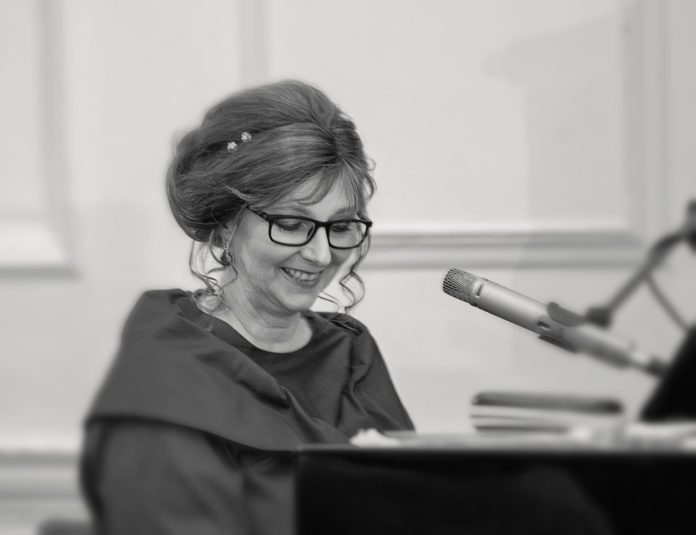
So, how am I faring after my recent accident, some of you have asked. Well, the hospital gave me an LJS brace (Long John Silver), but I had to dispense with it after a few days, as a fixed leg permitted me no perambulation, in fact zero movement, which I suppose was the whole point of the exercise. An administrator then told me over the phone to keep moving my knee as much as possible, which is definitely more my thing. I am – after all – a northerner!
Last week I mentioned NHS waiting lists in excess of one year. My daughter was one of these clients, due to have a repeat adenoidectomy in April 2020, so is now being offered it, 55 weeks later. The admin said she was one of their longest ‘waiters.’ Why ‘repeat’ you might ask, surely once is enough? Aha! Well, having had her adenoids out at age 4, that was supposed to be it. However, she still had unpleasant symptoms and a look-see with the appropriate scope – prompted by yours truly – brought an exclamation of great surprise from the young surgeon, who said … “oh my, they’re h u g e!” Anyway Messrs Ad & Oid will hopefully make only a limited appearance until the hospital removes the blighters one final time. Not sure everyone waiting for a replacement knee, hip or heart could handle a 55 week wait.
We have been madly busy clearing out grandma’s home, which has been a sad exercise, especially when it’s a person that you care about. All the possessions and personal effects that have been collected over her lifetime, now require instant decisions of keep-it, shop-it or skip-it. All happening whilst she is sequestered in a care home, oblivious to the goings on in her home. Of course I mentally fast forward and put myself in a similar position, which made for unpleasant thoughts. I have suffered since my 30s with dispos-o-phobia, ie I struggle to throw things away, as most of it shouldn’t be thrown in the bin. As an example, I couldn’t bear to think that my lifetime acquisition of classical LPs, CDs, piano and orchestral scores would end up in recycling, and sincerely hope my family will honour my request to donate the whole collection to the Royal College of Music. But what of the rest of my collectibles? I don’t just mean childhood books and toys (yup, still got some of those), school books (got some of those too), school photos (not just mine, but the annual ones of my own children). Boyoboy does it all add up! My opponents at home will probably order a skip.
Nonetheless, we’ve been having a big clear out at home, and in the process I discovered long lost pieces of school paraphernalia. [Warned you!] One of these discoveries is an English essay from 1978, in which we were asked to speculate on the future of Scotland, by the year 2000. My thoughts, penned below, were very much those of a politically naive child, but nonetheless fairly insightful. There has of course been a significant political shift between the years 2000 to 2021, with the SNP holding power since 2007. Here we go!
Where now Scotland?
《 In the year 2000 I expect Scotland will be a country still happily part of the UK. Hopefully it will have prospered through oil revenues and tourism. I don’t expect it will be influenced by the Scottish National Party, who are only nice if they aren’t in power; if they DID rise to power, probably they would become dictators and tyrants. In parliamentary affairs Scotland will have its own Assembly. The Chancellor of the Exchequer Mr. Denis Healey will probably have been given the sack, and someone with a little more common sense or who is more capable of controlling the economy, will replace him. 》
I didn’t get it all right, but it is close enough. SNP were until the 2000s a minority, token party in Scotland, and now they are in power, they control everything; they are indeed like dictators. Unfortunately they’re not showing much of a track record of success in welfare, drug rehabilitation, health, education or the economy. What they can promise their voters with certainty, is a divorce from England. In January 2020, whilst we celebrated a democratically planned Brexit release from the EU, Aileen McLean (SNP) announced to European leaders that Scotland ‘would be back,’ asking them to ‘leave a light on’ for them. Although Britons voted 52% to 48% in favour of leaving, in Scotland the vote was 62% to 38% to remain. Unsaid in this was that apparently only a small percentage of Scots voted, so this may not be a genuine reflection of true voter intentions. If IndyRef2 goes ahead as Ms Sturgeon expects, it is not so likely we will remain a United Kingdom, heading instead for an Untied Kingdom. What exactly she perceives the benefits of EU membership to be still remains unclear, although simply escaping the shackles of English linkage would appear to be a primary motivator. Some of the technical and legal hurdles would be significant, such as splitting UK assets, determining the right to work and study for those south of the border, access to fishing, and redrawing legal policies. Separate to this is the reviewing of immigration policies, electricity and gas usage, nuclear armaments and the positioning of armed forces personnel. Not a small order for a union created in 1707. There are of course upsides to belonging to the EU, eg funding for wind farms, bridges and motorways. One of the most significant and contentious areas will likely be currency. The Brits like money which is uniquely their own, but losing sterling may be a price the Scots have to pay. Handy then, that they are already flying the EU flag, rather than the Union Jack, for if Scotland gets critical aspects of the separation agreements wrong, such as free trade and a hard border with England (who take 60% of their exports), it will be left in a woeful state. You can’t ‘have your cake and eat it,’ Nicola. Under British law, it is the exclusive prerogative of Westminster to permit a referendum. Or not…
Covid deaths in Rio de Janeiro have reached a record high, with 36,500 deaths just last month, outstripping the birth rate for the sixth month running. Ten other Brazilian cities have also reported similar trends. India is reporting even more devastating figures; for a country with a population of 1.3 billion, numbers of daily cases were around 8,000 and deaths of around 100 back in February. Now matters have escalated with 350,000 new cases a day, and around 3,000 deaths. Political in-fighting has exacerbated matters, with states governed by opposing parties wrestling control over supplies. The ruling party BJP is known, for example, to be blocking supplies to Delhi, which is run by the opposition AAP, and some hospitals are discharging patients as they simply have no oxygen. Anil Vij, Haryana‘s BJP health minister said, ‘we’ll complete our needs, before giving to others.’ Police have been ordered to escort oxygen supplies, and such is the desperate need, that families are looting supplies from hospitals and oxygen cylinders are being sold on the black market. The Indian Supreme Court has ordered authorities to formulate a national emergency plan, with the pandemic being compared to Lombardy, but in a country with an already precarious health system.
Thanks to our vaccination drive, the UK reached an all time low this week with around 8 deaths, and low figures overall. Hospital admissions are also showing great results; out of a total of more than 74,000 admissions, only 32 of these were people who had been vaccinated, equating to 1:2,300. Despite this evidence of success, based on folks having only one jab, Boris Johnson says he will not deviate from his earlier roadmap. The long and winding road is still ahead, especially if new variants bring us to a sudden halt. We are tentatively starting to see an end to the tortuous restrictions of the past year, but what of those countries hampered by poverty, and consequently a lack of vaccines? Perhaps, if we’re now doing so well, we could send vaccines to countries like Brazil and India, and help bring their spiraling death rates down. The British government has just this week sent supplies to New Delhi in support, but declined to send vaccines. Surely all countries should help those most under attack. We already have division across the world, created by financial poverty and corruption. Let’s not allow vaccine poverty to facilitate associated deaths.
Now on a royal theme, I have always been in love with the beautiful portrait of the Princes in the Tower, by Samuel Cousins. Edward V and his brother Richard, Duke of York, were locked up in the Tower of London in 1483, and – according to historians and later writers, such as Shakespeare – were then murdered by their uncle and protector, Richard (who following his nephew’s death, became King Richard III). However, a potential new villain has emerged, according to historian Mei Trow: the royal physician, Dr John Argentine. Three youngsters in his care died; King Edward V (12) who had reigned for only two months, and his brother Richard (9), and later Prince Arthur (15) heir apparent, who died of unexplained causes in 1502. Physicians had access to all kinds of poisons and potions, so it is not without some vestige of possibility that this could be true. Doctors have been known over the centuries to ‘relieve’ their patients suffering (often uninvited) or to have a perverse penchant for ‘using their craft’ to take lives, creating fiction as to the cause thereof – Harold Shipman being one such contemporary example. We know the princes perished, but it’s possible the doctor dunnit.
Love
Jacqueline x









